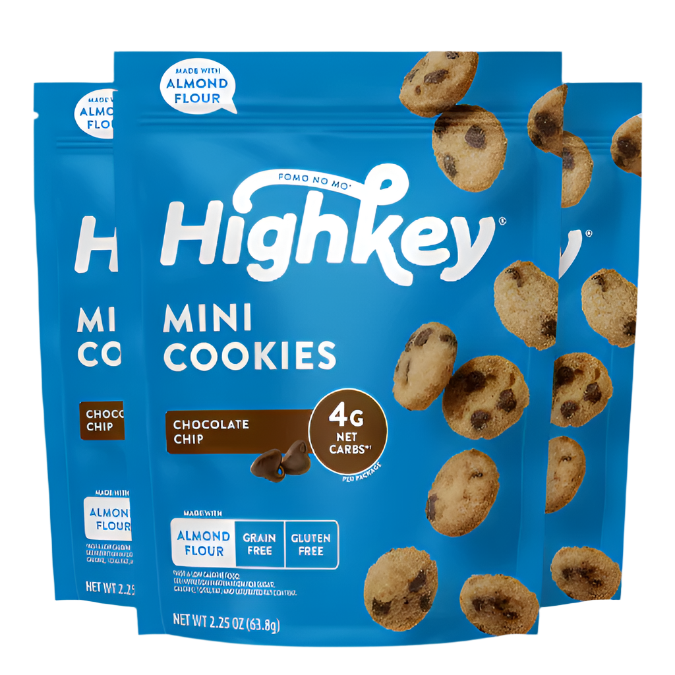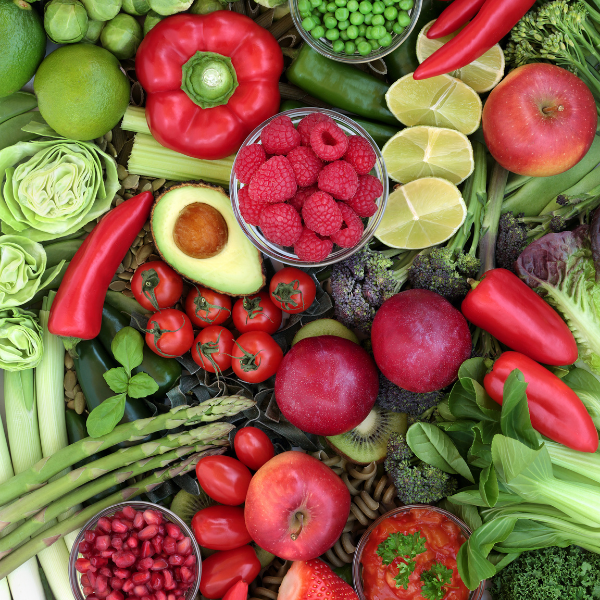Low Glycemic Foods: Fruit, Vegetables & High Glycemic Foods To Avoid
Low Glycemic Foods: Fruit, Vegetables & High Glycemic Foods To Avoid
Low Glycemic Foods
Looking for a low glycemic foods list to include in your diet? And a high glycemic foods list to avoid? You’ve come to the right place. But first let’s break down the difference between these two types of foods and what it means for you and your health.
You may be surprised to learn elimination of high glycemic foods isn’t the only way to reap the benefits of a low glycemic diet.
Glycemic Refers to How Food Impacts your Blood Sugar
The glycemic index (GI) is a system that ranks foods based on their impact on your blood sugar levels.
It compares the rate at which a carbohydrate containing food raises blood sugar to the rate at which pure glucose raises blood sugar. Pure glucose has a GI value of 100. This is the highest value assigned.
Common carbohydrate containing foods that are assigned a GI value include:
- Bread
- Pasta
- Cereal
- Crackers
- Milk
- Yogurt
- Cheese
- Some vegetables
- Fruits
- Beans
- Peas
- Lentils
- Jams, jellies, syrups
- Nuts
- Seeds
- Soda
- Juice
The GI Ranking System from Low to High
The GI ranking system has three categories:
- Low GI: Score of 55 or less
- Moderate GI: Score of 56–69
- High GI: Score of 70+
The GI has everything to do with how much and how fast carbohydrates from foods are digested and move into the bloodstream. Factors that impact this process include:
- Amount and type of carbohydrate (fiber reduces GI, sugar increases GI)
- Fat
- Protein
- Form of food (liquid vs solid)
Fat, fiber and protein all slow digestion. Higher amounts of these nutrients in foods result in a slower rise in blood sugar and therefore a lower GI score. So, it's not surprising that foods like nuts and seeds that contain all three (fat, fiber and protein) and have a low GI score.
Sugar, on the other hand, is digested quickly. And sugar in food whether added or naturally present, increases the GI score.
Low Glycemic Diets are Good for Health
Research shows that diets filled with low glycemic foods result in a number of health benefits, including (*):
- Rapid weight loss
- Blood sugar and insulin normalization
- Reduction in triglycerides
- Improvements in blood pressure
What is a Low Glycemic Food?
Foods that are digested slowly and cause a slow and steady rise in blood sugar are low glycemic.
Low Glycemic Foods – List
Minimally processed whole fruits and vegetables, beans, nuts and seeds are all low glycemic foods.
Foods without carbohydrates are excluded from the GI classification. But, these foods are inherently low glycemic, as they do not cause blood sugar to rise at all.
- Eggs
- Chicken
- Turkey
- Oil
- Lard
- Butter
- Ghee
- Fish
- Meat
Low Glycemic Fruits – list
It’s worth noting that almost all fruits are low glycemic compared to other foods like cereals and crackers. Fruits that meet the requirement of a GI of 55 or less include:
- Strawberries
- Blueberries
- Blackberries
- Raspberries
- Cranberries
- Kiwi
- Pomegranate
- Apples
- Pears
- Banana
- Mango
Do mango and banana surprise you? Both are at the higher end of the low GI score designation, they come in at 51 (just shy of the 55 or lower cut off). As they start to ripen, their GI increases as well due to more natural sugars.
Low Glycemic Vegetables – list
Vegetables are typically high in fiber, so they are almost always low glycemic but there are a few exceptions like potatoes. Peas, part of the bean family, and corn, a grain, are also commonly lumped into the vegetable category but they aren’t true vegetables so they are left out of the mix here.
Non starchy vegetables are very low glycemic and often not included in GI analysis. That’s because they contain very few carbohydrates. Most of the carbohydrates contained in non starchy vegetables are fiber and do not cause a rise in blood sugar at all. Examples of low glycemic non-starchy vegetables include:
- Leafy greens
- Peppers
- Tomatoes
- Fresh herbs
- Onions
- Garlic
- Cauliflower
- Broccoli
- Cabbage
- Zucchini
What about other vegetables?
- Carrots
- Spaghetti squash
- Butternut squash
What is a High Glycemic Food?
Foods that are rapidly digested and cause your blood sugar (glucose) to rise quickly. This category of foods usually includes carbohydrates that are low in fat, fiber or protein.
High Glycemic Food – List
- Juice
- Soda
- Bread (white and wheat)
- Most crackers
- Bagels
- Cakes
- Doughnuts
- Packaged breakfast cereal
- Soda
- Rice (brown and white)
- Instant oatmeal
- Honey
High Glycemic Fruit - List
Which fruits are high glycemic? There are actually very few truly high glycemic fruits on the list. Watermelon comes in with the highest GI score at 76. If we take into account fruits that fall into the moderate category we can add a few more to the list:
- Pineapple
- Grapes
- Ripe banana
High Glycemic Vegetables - List
Some starchy vegetables also have a high GI. If you can mash a vegetable there is a good chance it falls into the starchy category. High glycemic vegetables include:
- White potatoes
- Red potatoes
- Parsnips
Sweet potatoes fall into the moderate category coming in at 63 on the GI scale. Everyone’s fall favorite, pumpkin, hangs in this category as well.
Instantly Lower the Glycemic Impact of Food – Add Fat, Fiber or Protein
Combining foods can reduce how quickly blood sugar begins to rise. For example:
- Adding natural peanut butter (fat, fiber and protein) to a smoothie or bowl of instant oatmeal
- Topping a baked potato with greek yogurt (protein)
- Mixing regular rice with cauliflower rice (fiber)
Enjoy Low GI Foods Most Often
The research is pretty clear that eating low GI foods most often is good for health. And it's not difficult. As you can see, there are plenty of low GI foods. With a few exceptions if you eat whole, unprocessed foods you’ll be in that low GI category most of the time. When in doubt, add some fat, fiber or protein to lower the glycemic impact even more.


